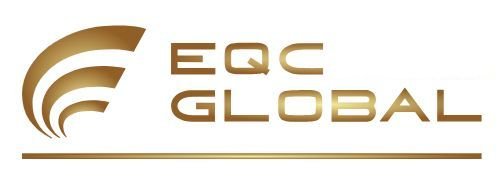Frequently Asked Questions (FAQ) and Answers
1. What is a management system?
A management system is a structured framework of processes and procedures that organizations establish to ensure compliance with standards, regulations, and objectives, enhancing efficiency and performance across various areas.
2. What are the benefits of implementing a management system?
Implementing a management system can lead to improved efficiency, enhanced customer satisfaction, better risk management, and the ability to meet compliance requirements more effectively.
3. What types of management systems are commonly used?
Some commonly used management systems include Quality Management Systems (QMS), Environmental Management Systems (EMS), Health and Safety Management Systems (HSMS), and Information Security Management Systems (ISMS).
4. How can a management system be implemented?
Implementation involves defining objectives, assessing the current state, developing a plan, executing the plan, and continuously monitoring and improving processes to achieve desired outcomes.
5. What role does documentation play in a management system?
Documentation serves as a vital component, ensuring that procedures are clearly defined, followed, and consistently evaluated for effectiveness, thereby facilitating communication and accountability.
6. How can organizations ensure employee buy-in?
Involving employees in the process, providing proper training, and demonstrating the benefits of the management system can significantly enhance engagement and buy-in among staff.
7. What are the common challenges faced during implementation?
Common challenges include resistance to change, lack of resources, insufficient training, and inadequate communication, all of which can hinder successful implementation.
8. How is success measured for a management system?
Success can be measured through key performance indicators (KPIs), audits, feedback from stakeholders, and overall improvement in operational efficiency and effectiveness.
9. Can a management system be tailored to an organization’s needs?
Yes, management systems can and should be tailored to fit the specific needs, objectives, and regulatory requirements of each organization.
10. What is the certification process for management systems?
The certification process typically involves an assessment by an accredited body to verify compliance with relevant standards, followed by regular surveillance audits to maintain certification status.
11. How often should a management system be reviewed?
A management system should be reviewed at regular intervals, such as annually or bi-annually, to ensure it remains effective and aligned with organizational goals.
12. What role does leadership play in a management system?
Leadership is crucial, as it sets the tone for the culture of quality or continuous improvement and ensures that resources are allocated to support the management system’s implementation and maintenance.
13. How can technology assist in management system implementation?
Technology can enhance management systems through tools like software for tracking performance metrics, document management, and communication, facilitating easier access to necessary information.
14. What training is necessary for employees regarding a management system?
Employees should receive training on the specific processes, procedures, and tools associated with the management system, as well as general principles related to compliance and performance improvement.
15. How does a management system contribute to customer satisfaction?
By implementing consistent processes and practices, management systems enable organizations to deliver products and services that meet or exceed customer expectations, fostering loyalty and satisfaction.
16. Can management systems be integrated?
Yes, various management systems can often be integrated to streamline processes and reduce duplication, allowing for a more cohesive approach to compliance and performance management.
17. What is the difference between a management system and a business model?
A management system focuses on managing processes and achieving specific outcomes, while a business model outlines how an organization creates, delivers, and captures value.
18. What is the role of internal audits in a management system?
Internal audits are essential for assessing compliance with established processes and identifying areas for improvement, ultimately contributing to the system’s effectiveness and efficiency.
19. How do external audits differ from internal audits?
External audits are conducted by independent bodies to evaluate compliance with standards, while internal audits are performed by the organization to assess its own processes and adherence to policies.
20. What are the key strategies for continuous improvement in a management system?
Key strategies include regular performance assessments, stakeholder feedback, training opportunities, and benchmarking against best practices or recognized standards, fostering ongoing enhancement of the management system.

Frequently Asked Questions (FAQ) and Answers
1. What is a management system?
A management system is a structured framework of processes and procedures that organizations establish to ensure compliance with standards, regulations, and objectives, enhancing efficiency and performance across various areas.
2. What are the benefits of implementing a management system?
Implementing a management system can lead to improved efficiency, enhanced customer satisfaction, better risk management, and the ability to meet compliance requirements more effectively.
3. What types of management systems are commonly used?
Some commonly used management systems include Quality Management Systems (QMS), Environmental Management Systems (EMS), Health and Safety Management Systems (HSMS), and Information Security Management Systems (ISMS).
4. How can a management system be implemented?
Implementation involves defining objectives, assessing the current state, developing a plan, executing the plan, and continuously monitoring and improving processes to achieve desired outcomes.
5. What role does documentation play in a management system?
Documentation serves as a vital component, ensuring that procedures are clearly defined, followed, and consistently evaluated for effectiveness, thereby facilitating communication and accountability.
6. How can organizations ensure employee buy-in?
Involving employees in the process, providing proper training, and demonstrating the benefits of the management system can significantly enhance engagement and buy-in among staff.
7. What are the common challenges faced during implementation?
Common challenges include resistance to change, lack of resources, insufficient training, and inadequate communication, all of which can hinder successful implementation.
8. How is success measured for a management system?
Success can be measured through key performance indicators (KPIs), audits, feedback from stakeholders, and overall improvement in operational efficiency and effectiveness.
9. Can a management system be tailored to an organization’s needs?
Yes, management systems can and should be tailored to fit the specific needs, objectives, and regulatory requirements of each organization.
10. What is the certification process for management systems?
The certification process typically involves an assessment by an accredited body to verify compliance with relevant standards, followed by regular surveillance audits to maintain certification status.
11. How often should a management system be reviewed?
A management system should be reviewed at regular intervals, such as annually or bi-annually, to ensure it remains effective and aligned with organizational goals.
12. What role does leadership play in a management system?
Leadership is crucial, as it sets the tone for the culture of quality or continuous improvement and ensures that resources are allocated to support the management system’s implementation and maintenance.
13. How can technology assist in management system implementation?
Technology can enhance management systems through tools like software for tracking performance metrics, document management, and communication, facilitating easier access to necessary information.
14. What training is necessary for employees regarding a management system?
Employees should receive training on the specific processes, procedures, and tools associated with the management system, as well as general principles related to compliance and performance improvement.
15. How does a management system contribute to customer satisfaction?
By implementing consistent processes and practices, management systems enable organizations to deliver products and services that meet or exceed customer expectations, fostering loyalty and satisfaction.
16. Can management systems be integrated?
Yes, various management systems can often be integrated to streamline processes and reduce duplication, allowing for a more cohesive approach to compliance and performance management.
17. What is the difference between a management system and a business model?
A management system focuses on managing processes and achieving specific outcomes, while a business model outlines how an organization creates, delivers, and captures value.
18. What is the role of internal audits in a management system?
Internal audits are essential for assessing compliance with established processes and identifying areas for improvement, ultimately contributing to the system’s effectiveness and efficiency.
19. How do external audits differ from internal audits?
External audits are conducted by independent bodies to evaluate compliance with standards, while internal audits are performed by the organization to assess its own processes and adherence to policies.
20. What are the key strategies for continuous improvement in a management system?
Key strategies include regular performance assessments, stakeholder feedback, training opportunities, and benchmarking against best practices or recognized standards, fostering ongoing enhancement of the management system.


